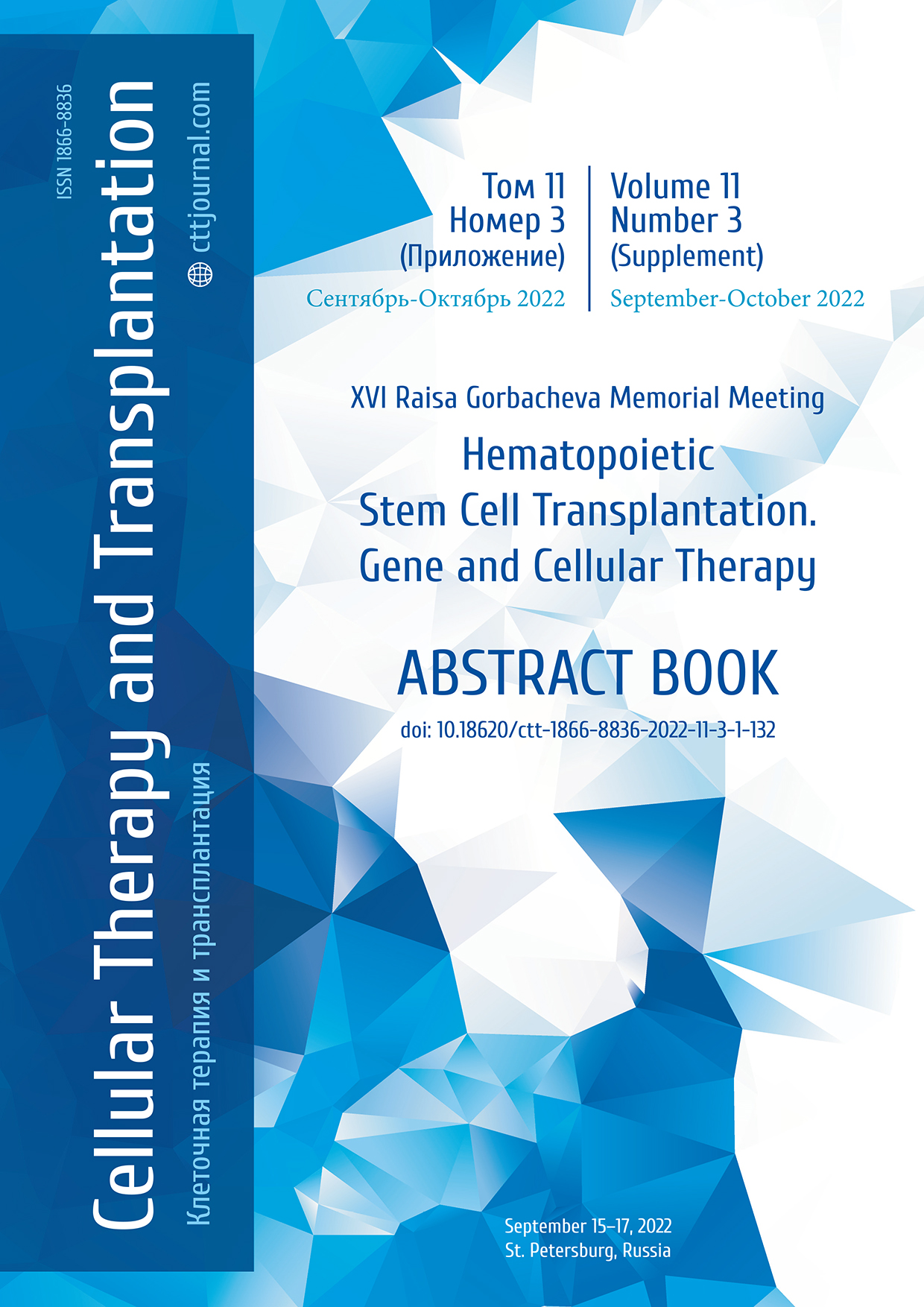HA-02. Genetic mutations in children with acquired aplastic anemia
Irma V. Yemialyanova, Tatiana А. Uglova, Alexander А. Migas, Olga V. Aleinikova
Belarusian Research Center for Pediatric Oncology, Hematology and Immunology, Borovlyani, Republic of Belarus
Contact: Dr. Irma V. Yemialyanova, phone: (+375) 29-861-7945; e-mail: dzamiko-koba@mail.ru
Summary
The standard of treatment for pediatric patients with severe acquired aplastic anemia (SAA), who do not have an HLA-compatible related donor to perform allogeneic hematopoietic stem cell transplantation (HSCТ), is the combined immunosuppressive therapy (IST). An unsatisfactory result of IST motivates to search for factors that determine the need for allo-HSCT from an unrelated HLA-identical donor as first-line therapy. This retrospective study was designed in order to search for early unrelated donor allogeneic HSCT decision-making criteria in children with SAA.
Materials and methods
Full exome sequencing was carried out on archival initial BM samples of 58 patients younger than 18 years with SAA treated at the Research Center for Pediatric Oncology, Hematology and Immunology in 1997-2018.
Results
Somatic mutations in 43 genes were detected in 32 out of 58 (55.2%) children with SAA. They formed a determined molecular genetic status (DMGS) group. Patients without DNA mutations were assigned to unknown molecular genetic status (UMGS) group. Only 46 patients receiving IST were included in the analysis aimed to determine genetic mutations of clinical significance in SAA. The overall survival rate for patients with mutations at the time of diagnosis and after immunosuppressive therapy is lower than for patients without mutations. (75%±9% and 81%±8%, respectively). All patients with mutations were divided into 2 subgroups based on mutations identified. The overall survival of patients with mutations in genes associated with immunological dysregulation (IL21R, CASP10, LYST, FAS, ADA2, XIAP) was lower (60%±22%) than in patients with other molecular changes (80%±9%) and patients without mutations (81%±8%). The overall survival of patients with mutations causing impaired DNA repair (FANCB, FANCC, SOS1, NBN, RUNX1, ACD, TERT, POLD1, MSH3, BRCA2, POLE, ATR, BRCA1, MSH2, RAD54L, MSH6, MLH1, MLH3, ATM, NABP2, NEIL1) was also lower (71%±11%) than in patients with other molecular genetic changes (86%±13%) and patients without mutations (81%±8%). The overall survival of patients with a single mutation was significantly lower (56%±17%) compared to patients with multiple mutations (86%±12%). The overall survival of patients with a mutation in the MSH3 gene was 0%. The overall survival of patients with mutations in the POLE+POLD1 genes was 33%±27% and was significantly lower (p=0.0093) than in patients without these disorders (81%±9%). All patients with mutations in the MSH3 and POLE+POLD1 genes were combined into a high risk group characterized by worse response to IST. The overall survival of patients in this group was 33±19% and was significantly (p=0.0029) lower than in patients without mutations in these genes (89±7%). It was found that when the number of colony forming units of granulocytes and monocytes (CFU-GM) is below 2.5×105 and the number of burst-forming units of the erythroid series (BFU-E) is below 0.1×105 with growth factors it is necessary to exclude the presence of mutations in the MSH3, POLE and POLD genes (sensitivity 100%).
Conclusions
The presence of mutations in the MSH3, POLE+POLD1 genes is an unfavorable predictor for long-term overall survival in patients with SAA. These patient require allo-HSCT from unrelated HLA-identical donor as first-line therapy.
Keywords
Severe aplastic anemia, stratification, molecular genetics, allo-HSCT.


